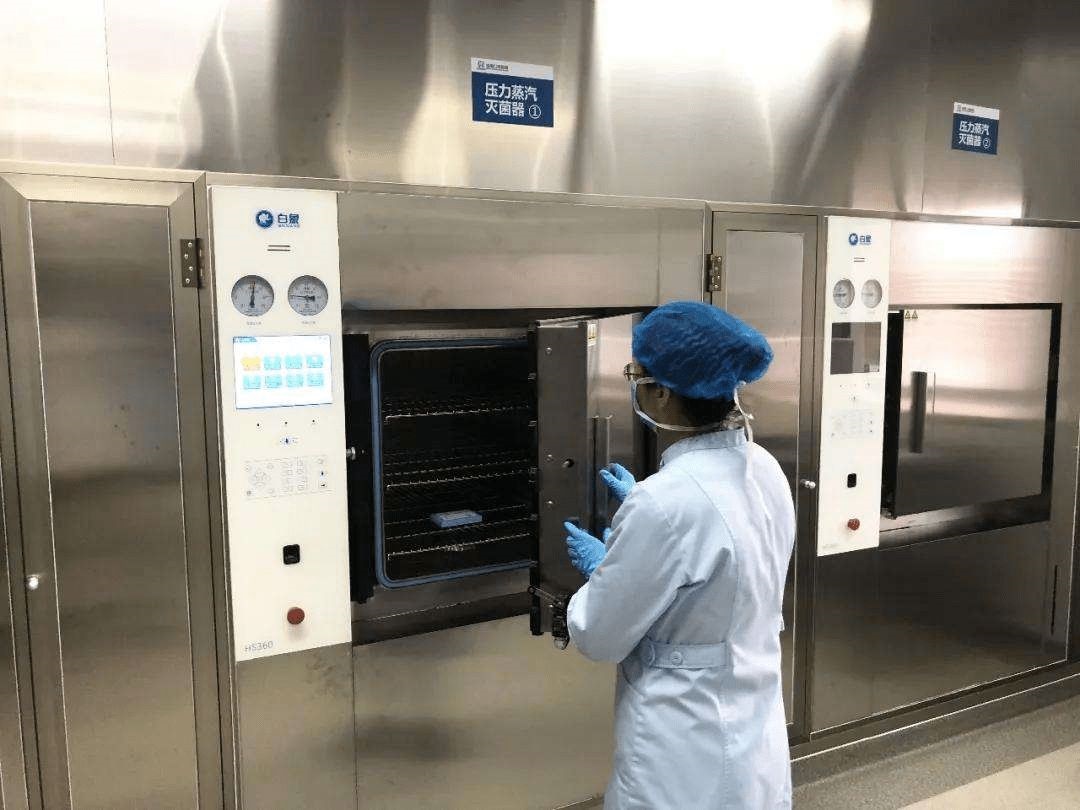一般的な医療用滅菌方法は何ですか?
2022-01-25

Sterilization is the use of physical or chemical methods to destroy all microorganisms including large numbers of resistant bacterial spores. Make it sterile to avoid infection and spread of disease during use.
Common medical sterilization methods include: dry heat sterilization, moist heat sterilization, gas sterilization, radiation sterilization, filter sterilization, 等. The following is a brief introduction to these sterilization methods
Dry Heat Sterilization
Place the items in a dry heat sterilization cabinet (箱), and use dry hot air to kill microorganisms or eliminate pyrogenic substances.
適用範囲: Glassware, metal utensils, and items that are resistant to high temperature but should not be sterilized by moist heat sterilization can all be sterilized by this method.
Dry heat sterilization conditions are generally (160-170℃)×120min or more, (170-180℃)×60分以上または250℃×45分以上.
乾熱滅菌を使用する場合, 滅菌するアイテムは、適切な装填方法を備えている必要があり、滅菌の有効性と均一性を確保するために密に配置しないでください。.
乾熱滅菌で最も一般的に使用される生物学的指標は、枯草菌の胞子です。.
湿熱滅菌
殺菌剤に入れて微生物を殺す方法 (ポット), and using high-pressure saturated steam to denature the proteins and nucleic acids in the microbial cells. This method has strong sterilization ability and is the most effective and widely used sterilization method in thermal sterilization.
適用範囲: buffer solution, culture medium, clean clothes, glassware, infectious dirt and other items that will not change or be damaged when exposed to high temperature and high humidity.
Moist heat sterilization usually adopts 121℃×15min or 121℃×30min. During sterilization, the sterilized items should be loaded in an appropriate manner, and should not be arranged too densely to ensure the effectiveness and uniformity of sterilization.
The most commonly used biological indicator for moist heat sterilization is Bacillus stearothermophilus spores.
Gas Sterilization
Use the gas formed by chemical disinfectants to kill microorganisms. Gas sterilization can be subdivided into ozone sterilization and ethylene oxide sterilization.
1. Ozone Sterilization and Disinfection
Ozone has a strong sterilization and disinfection effect. The principle of sterilization and disinfection is: the molecular structure of ozone is unstable at normal temperature and pressure, and it quickly decomposes into oxygen and single oxygen molecules. The latter has strong activity and has a strong oxidizing effect on bacteria. An enzyme necessary for oxidizing glucose in bacteria, thereby destroying their cell membranes, killing it.
2. Ethylene Oxide Sterilization (並ぶ) 方法
The ethylene oxide sterilization is a method of sterilizing with ethylene oxide gas. It is a traditional sterilization method that can be applied to sterilization of work clothes, medical instruments, facilities, and equipment that are not resistant to heat sterilization. The ethylene oxide sterilization system mainly has the following four important factors that mutually restrict the sterilization effect:
①humidity; ②temperature; ③gas concentration; ④sterilization time.
Ethylene oxide has very strong penetration and diffusion ability, and its sterilization mechanism is mainly strong oxidation, so it has the characteristics of broad-spectrum sterilization and strong sterilization ability, and has a strong killing effect on microbial propagules and spores. .
Radiation Sterilization
1. Ionizing Radiation
Sterilize with ionizing X-rays, gamma rays.
The lethal effect of ionizing radiation on microorganisms is mainly caused by changes in intracellular biochemistry.
Safety issues of irradiated medicines and foods: radiation sterilization for medicines or foods should undergo safety tests. It is absolutely necessary to conduct a scientific and comprehensive evaluation, and high doses of radiation should be used with caution.
2. Electromagnetic Wave Radiation
(including ultraviolet [wavelength 190~350nm], infrared [wavelength 0.77~1000μm], microwave [wavelength 1~1000mm]).
3. UV Sterilization
When ultraviolet rays irradiate microorganisms, energy transfer and accumulation occurs, and the accumulation results in the inactivation of microorganisms, thereby achieving the purpose of disinfection. When bacteria and viruses absorb a dose of more than 3600~65000uW/c㎡, it has a strong destructive power to the deoxyribonucleic acid (DNA) and ribonucleic acid (RNA) of bacteria and viruses, which can make bacteria and viruses lose their viability and reproduction. Eliminate bacteria and viruses and achieve the effect of disinfection and sterilization.
Filter Sterilization
Physically remove microorganisms from the medium. Microorganisms and impurities in air or liquid are often filtered with membrane filters made of different materials to obtain sterile, impurity-free air or liquid.
The pore size of the filter membrane for filtering viruses is 25 ~ 100nm; the pore size of the filter membrane for filtering bacteria is 0.22 ~ 0.45μm
After a detailed understanding of these five common sterilization methods, we have compiled a summary table for everyone to distinguish more clearly
The working conditions, scope of application and limitations of various sterilization methods.
















